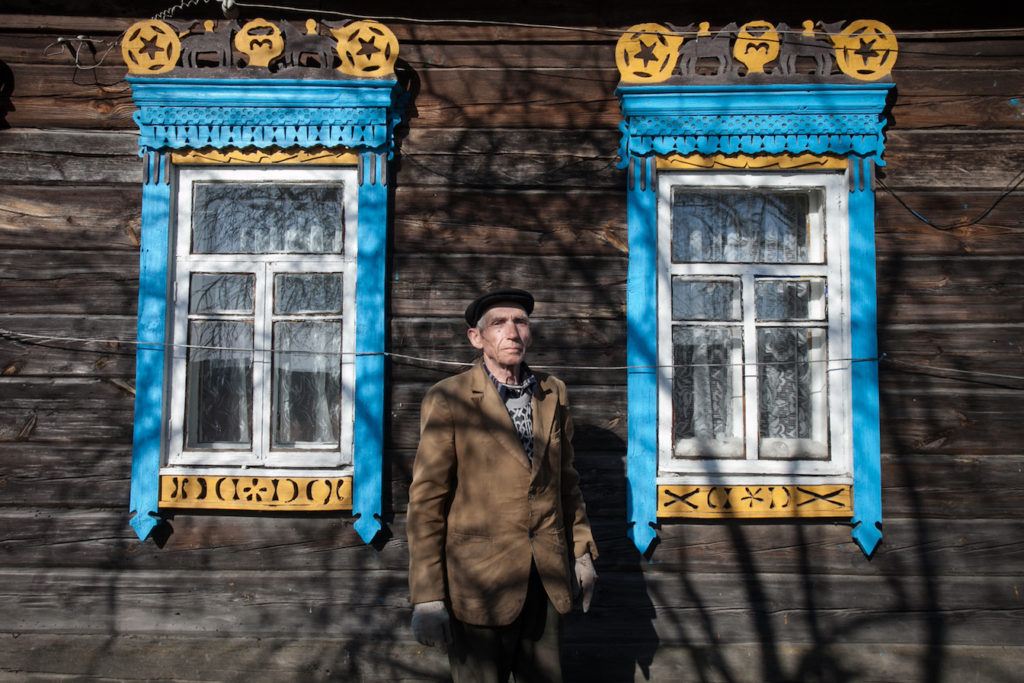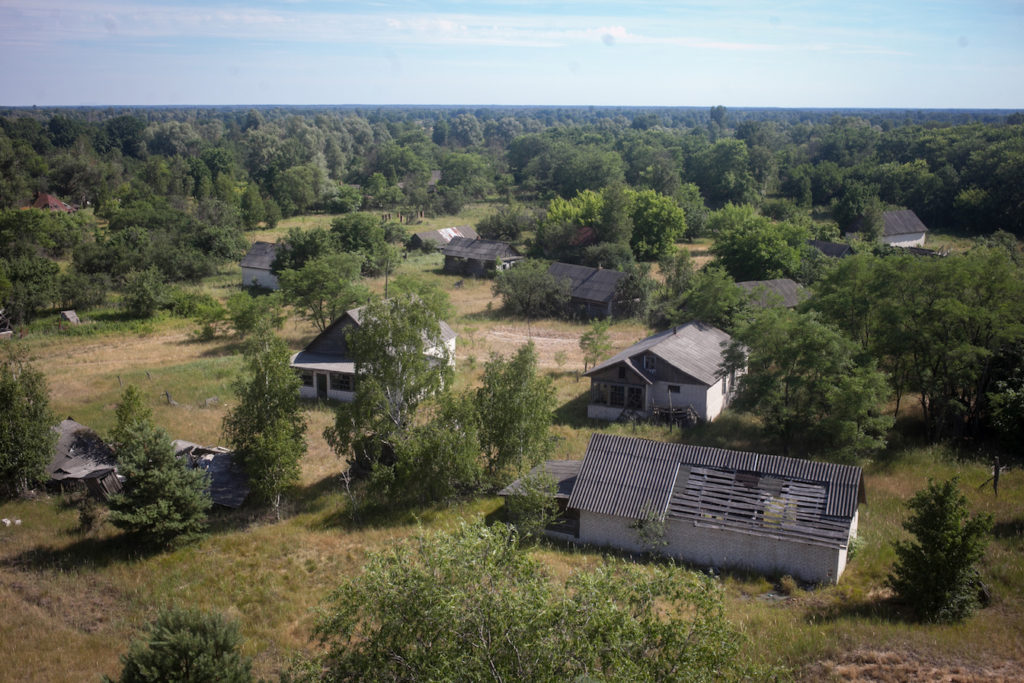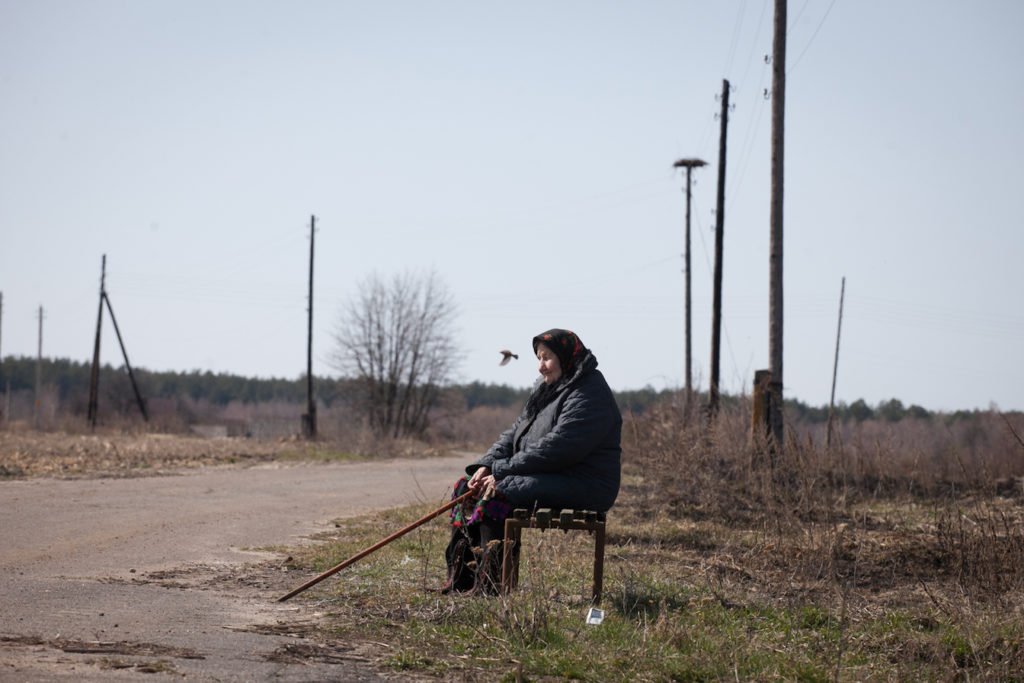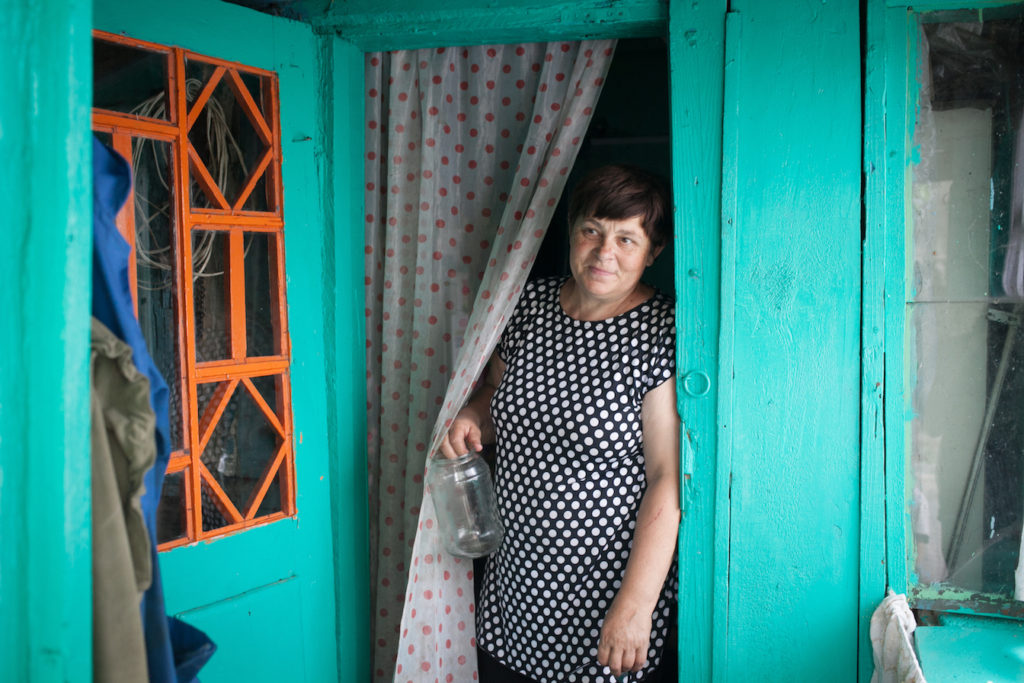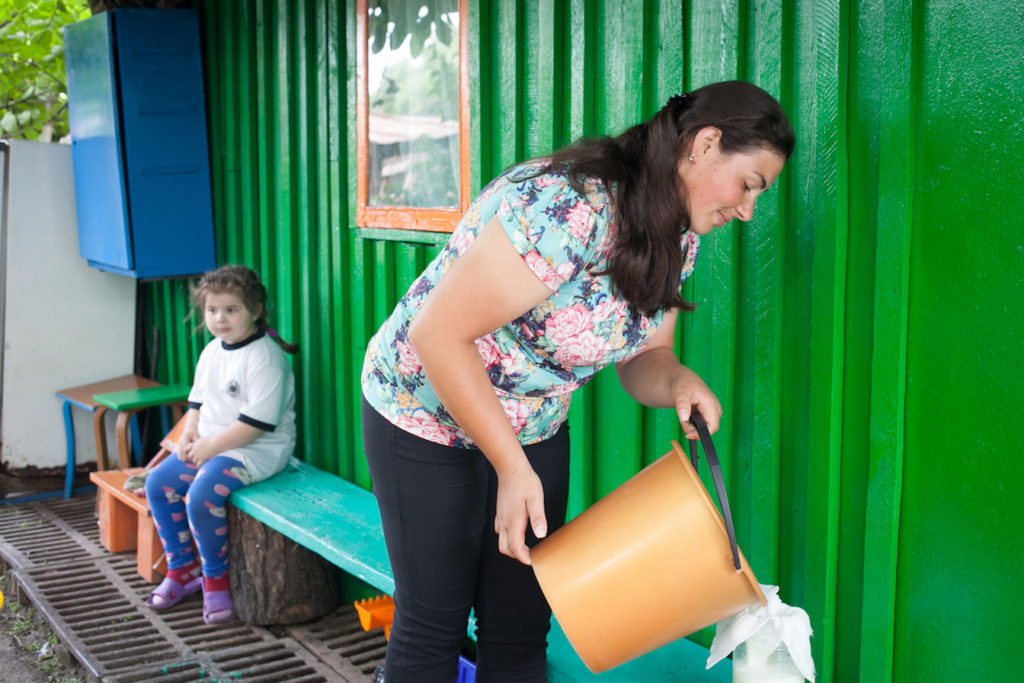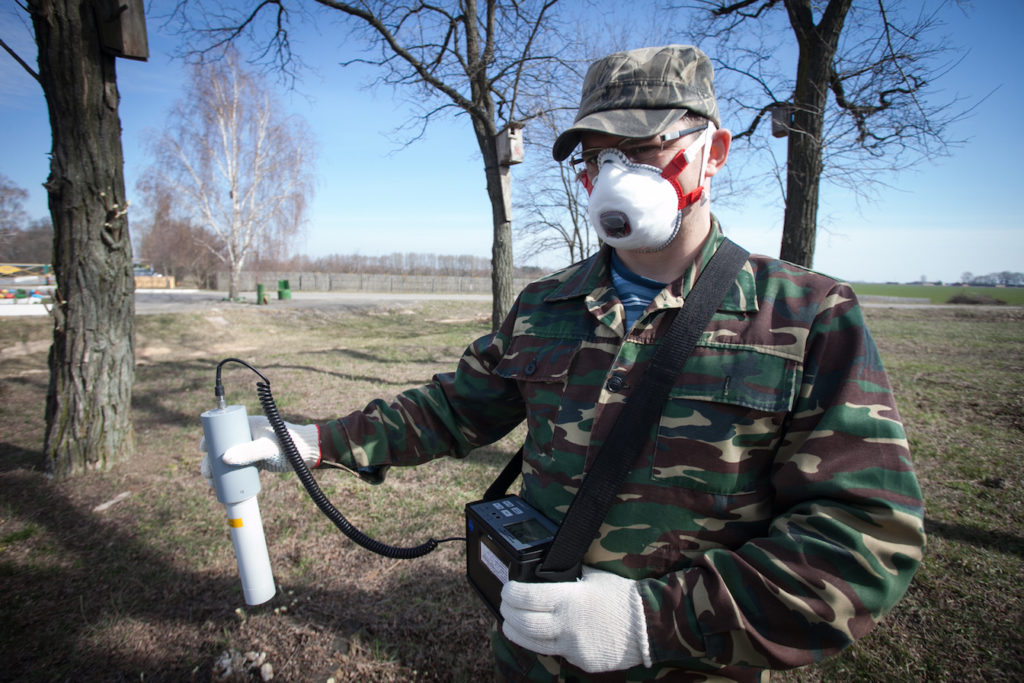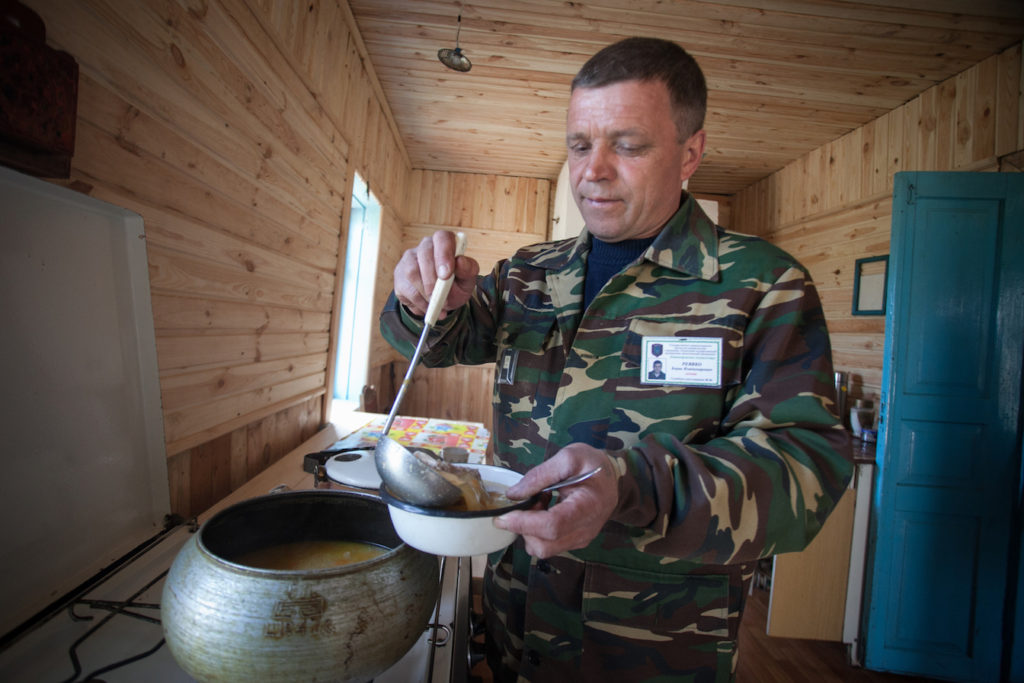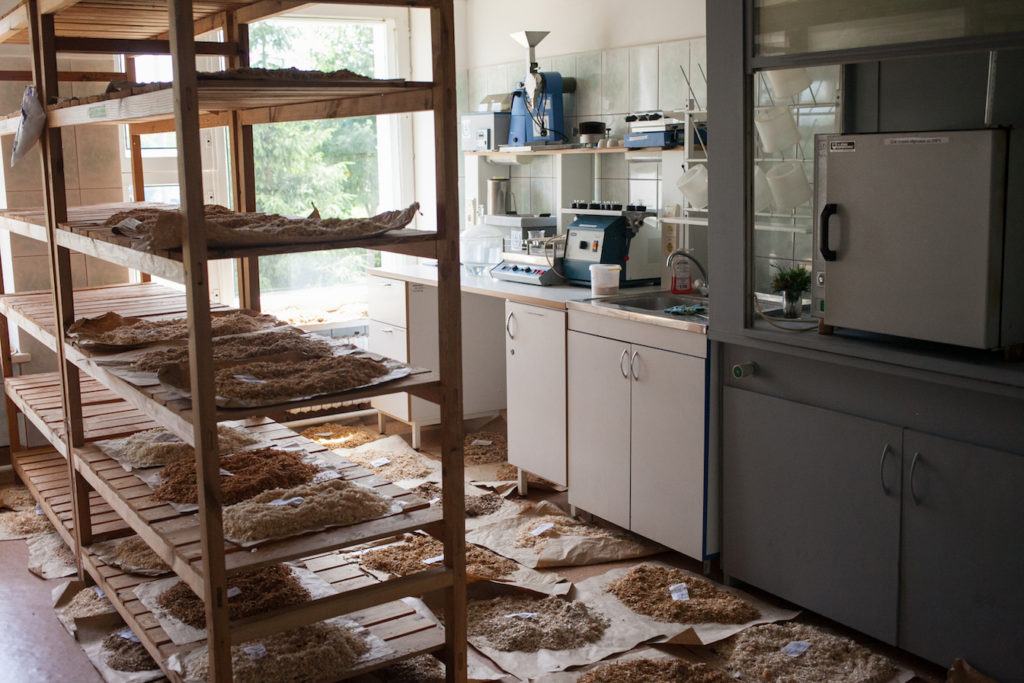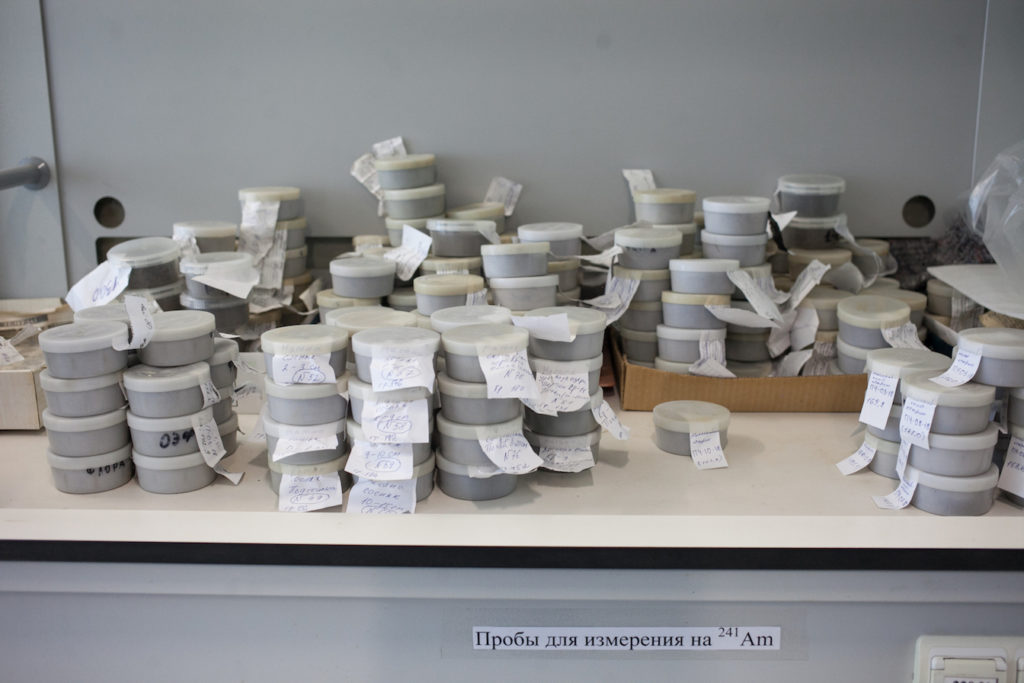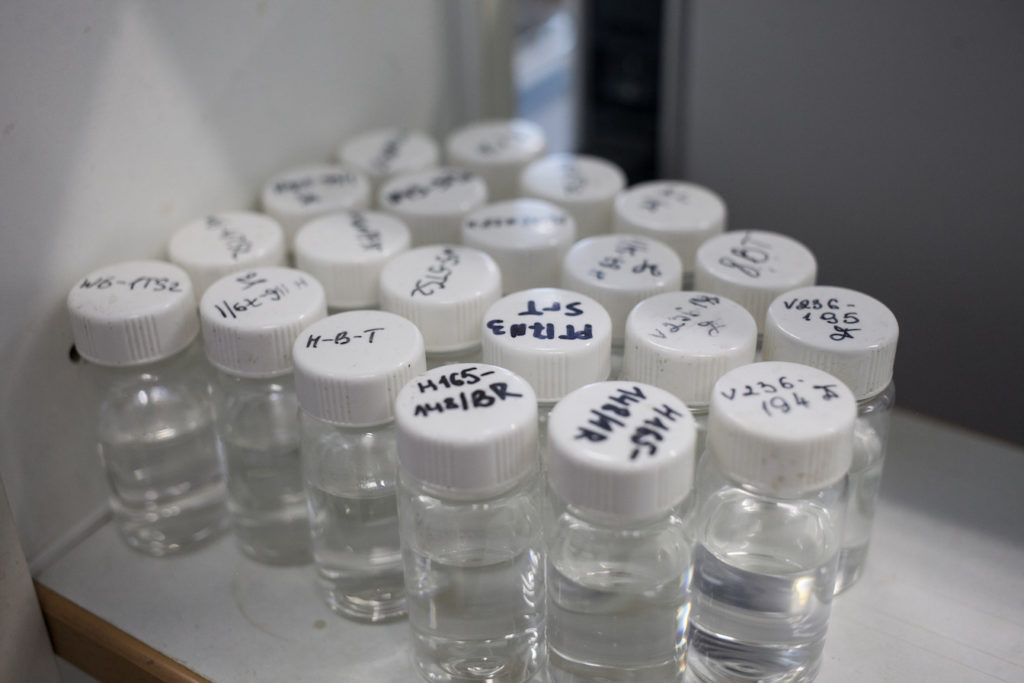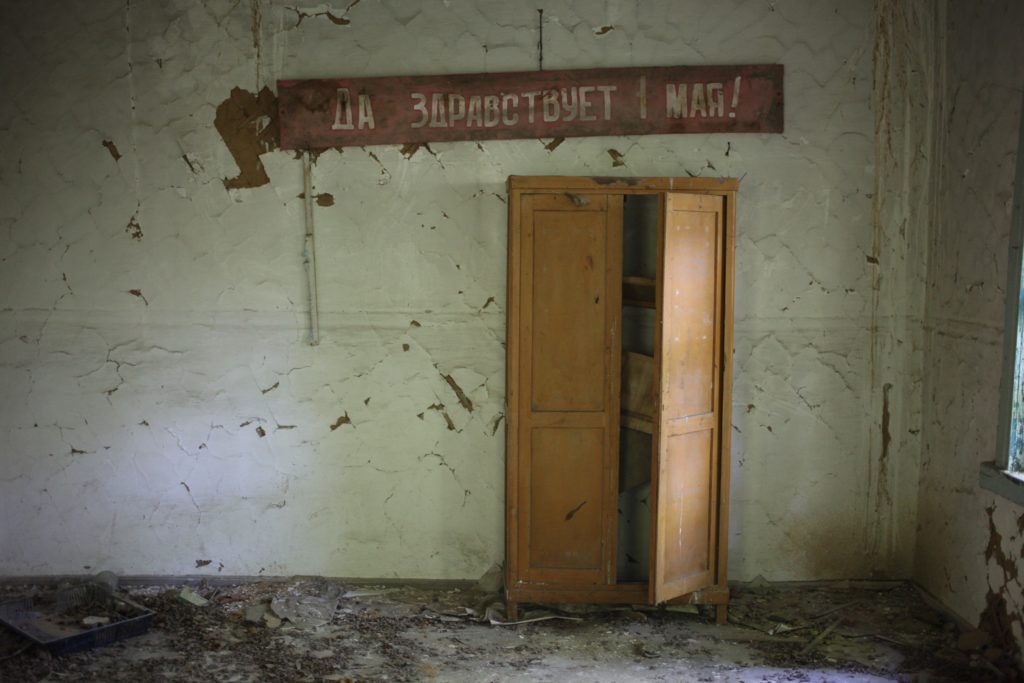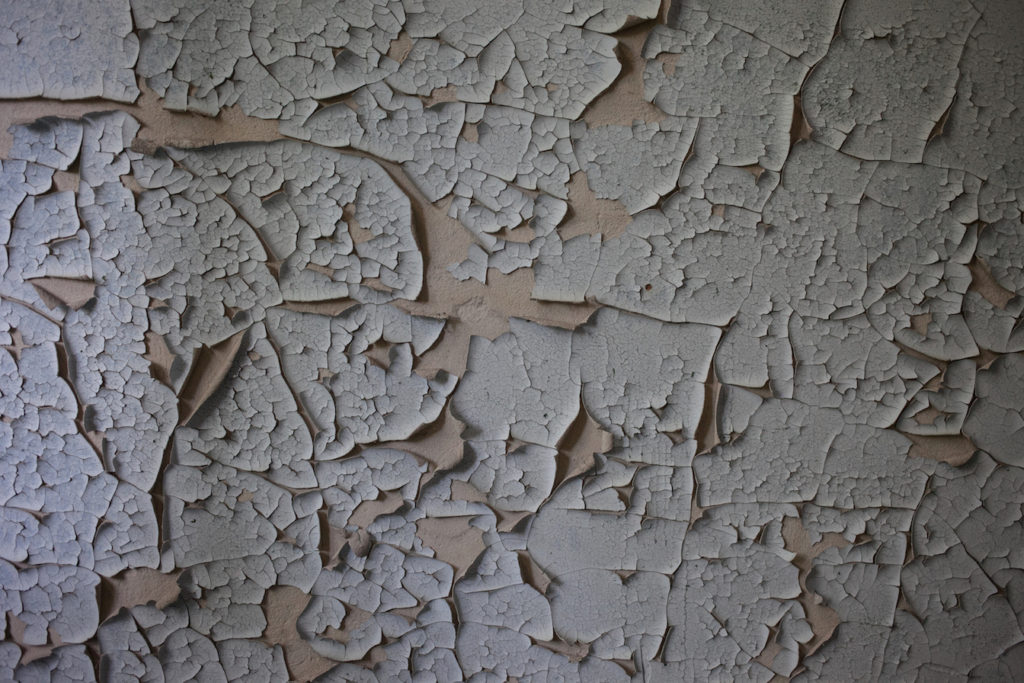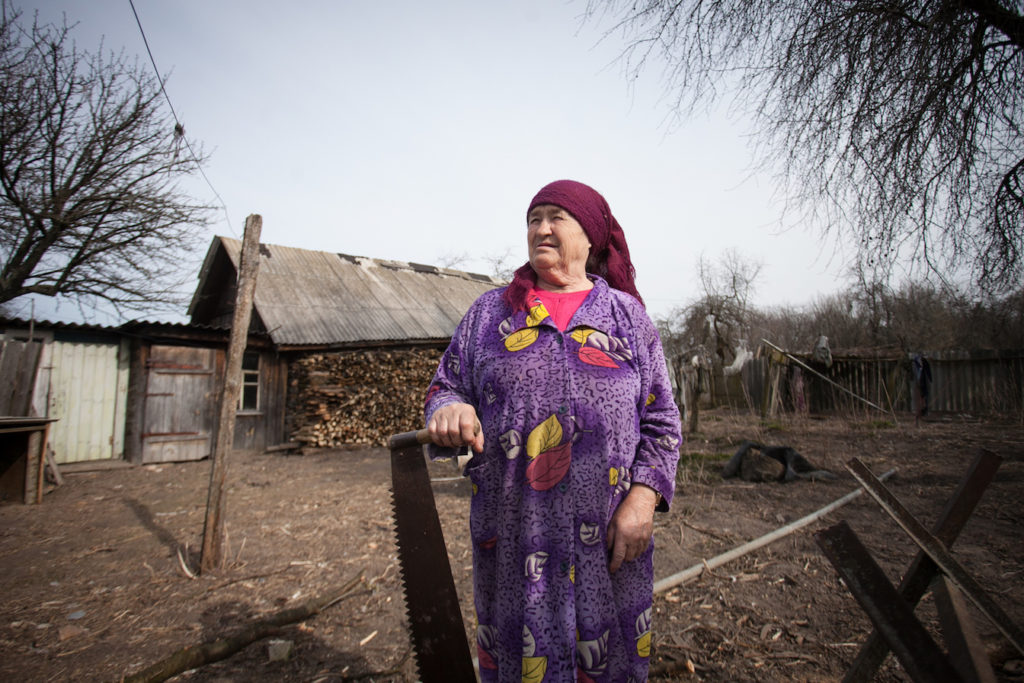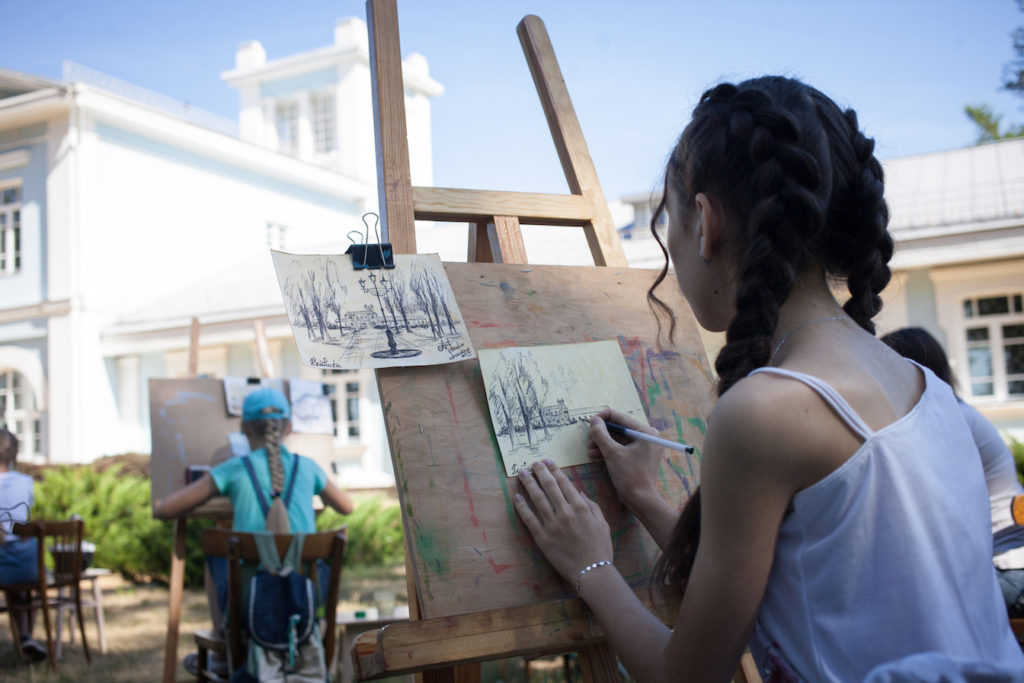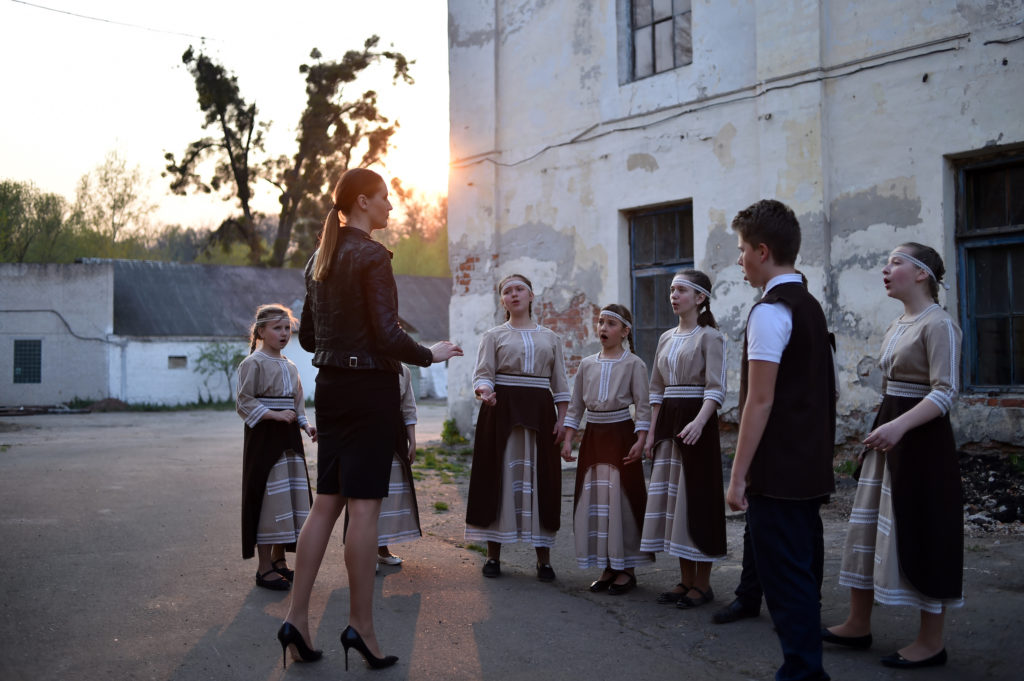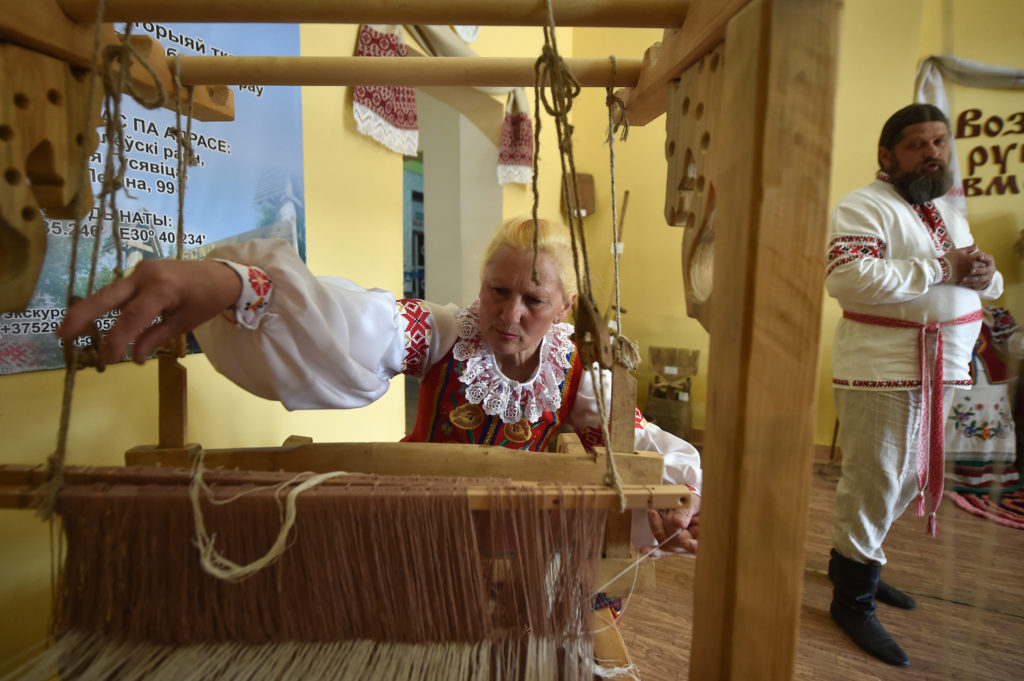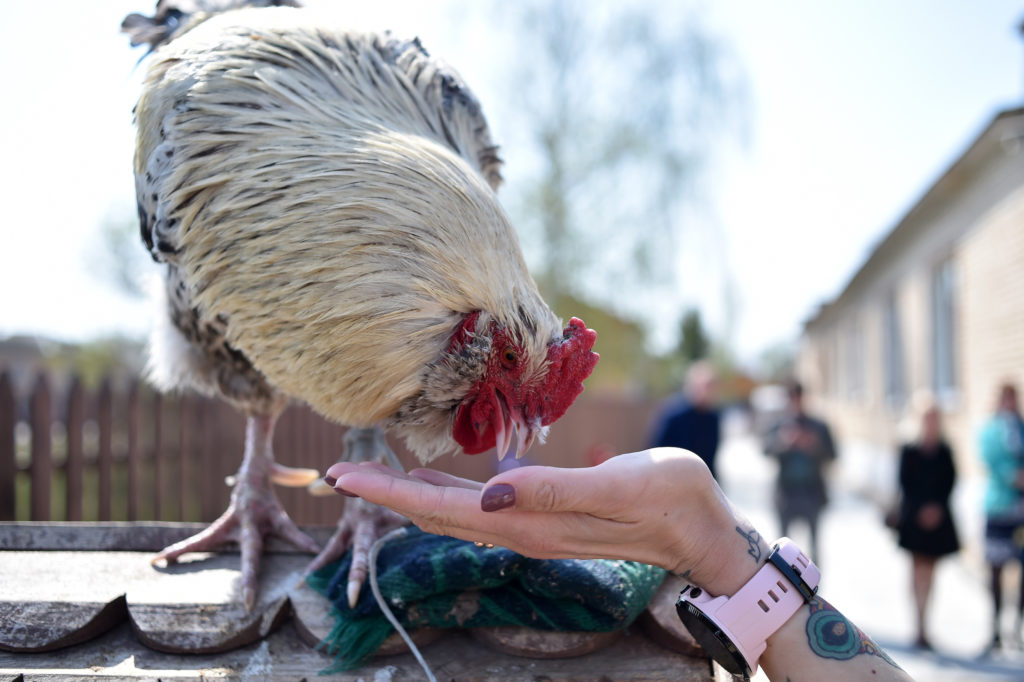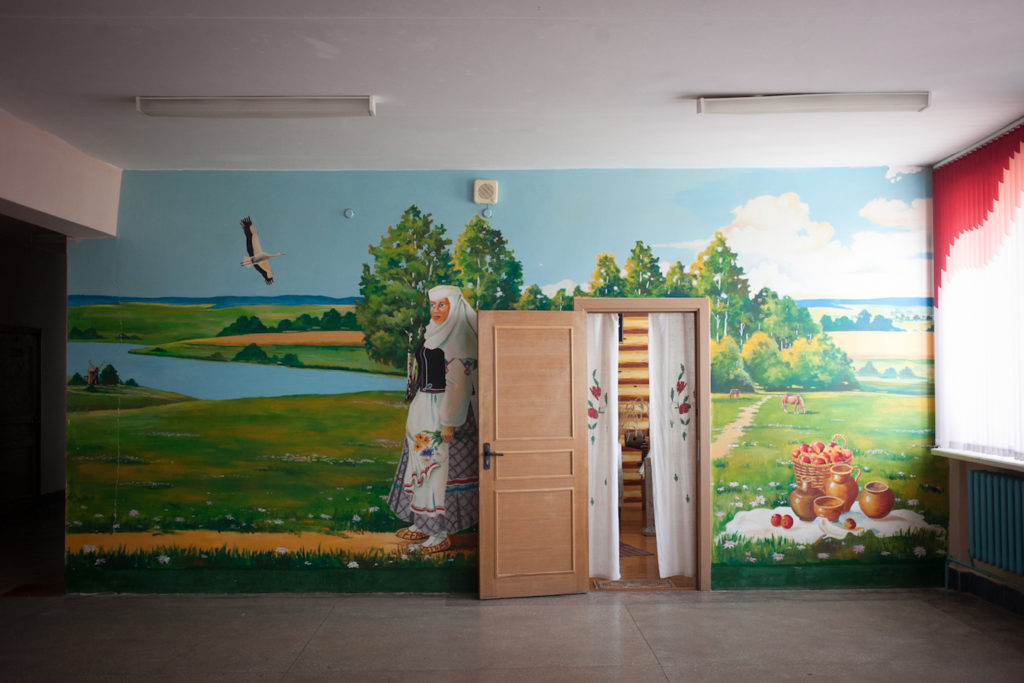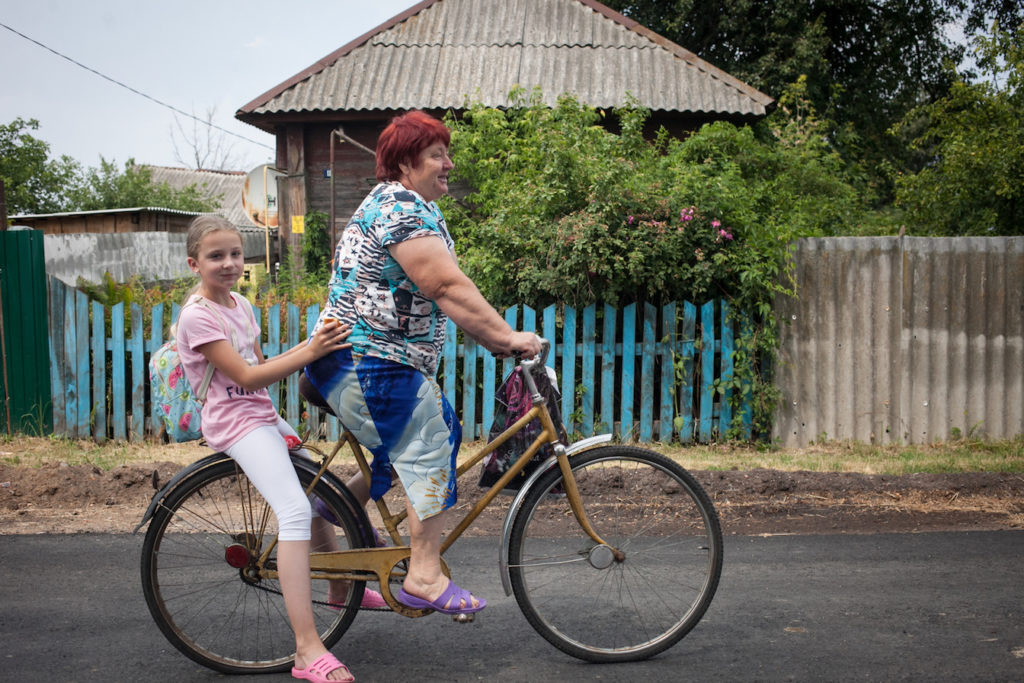
The Chernobyl Nuclear Power Plant disaster in 1986 sent five percent of the radioactive reactor’s core into the atmosphere and upwind into Belarus, Ukraine and parts of Russia – contaminating over 150,000 sq km of the region. The radioactive material spread over a 30 km radius from the plant, leading to the creation of an “exclusion zone” on both sides of the Belarus-Ukrainian border – an area of 2,600 square kilometers that is not inhabitable by people to this day.
Soon after the disaster, the region developed the ethos of a forlorn land not fit for human habitation. 1.8 million hectares of the most fertile arable lands had been contaminated, and if anyone wanted to stay behind it was because they wanted to spend the last years of their lives “where their ancestors are buried.”
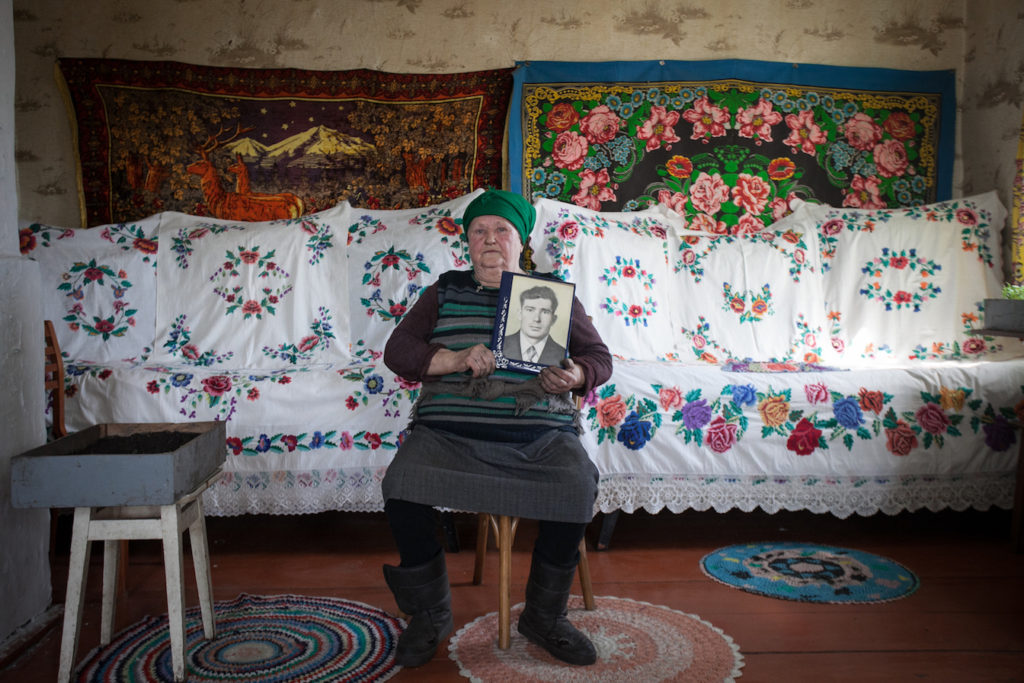
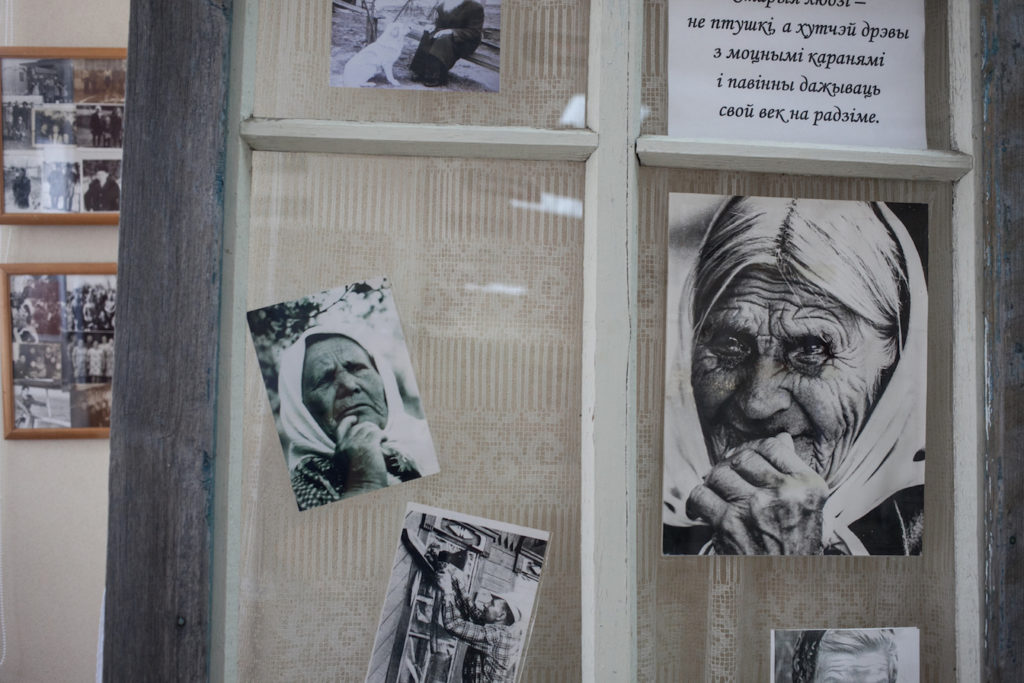
During the evacuation years, many were forced to leave their homes, the most emotional part of the Chernobyl tragedy. 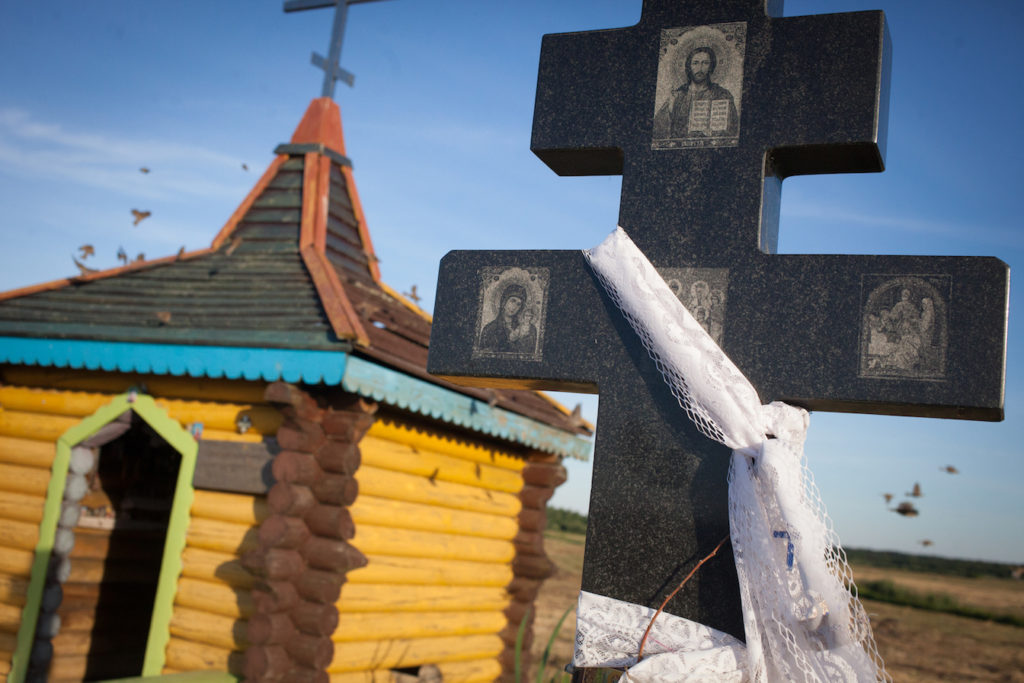
All photos: Siarhiej Leskiec / UNDP Belarus
Maria is one of those people. She continues to live in her village of Navaselki, the last inhabited place at the very edge of the Belarusian part of the exclusion zone, located only 50 km from the reactor. Once home to 1,300 and a thriving collective farm, today only 156 are left, and most villagers are in 70s, 80s and 90s.
Even after her husband passed away in 2001, Maria refused to move away. During winters she goes to her relatives in a neighboring town, but every spring she returns to her native village and works on her land.
Decontamination activities here have helped clean the soil. Villagers grow fruits and vegetables, breed chickens and pigs and are supplied by a mobile shop that comes three times a week. Like others living in affected areas, they undergo regular health screenings. But at their ages, most do not care about radiation levels. They are more frustrated about not being able to cross into the exclusion zone for berries, mushrooms and game like they used to.
Prior to the accident, southeast parts of Belarus were some of the most rapidly developing districts in the country – with booming oil and chemical industries, along with some of the best agriculture in the former Soviet Union, heavy machinery production and tourism. But in the years that followed the catastrophe, agriculture and industry collapsed, exports dropped to almost zero and tourism ceased.
Take Brahin district, once famous for its high delicious butter, regularly exported to the Russian Imperial capital of Saint Petersburg. The local milk and meat industry of the town almost disappeared after local pastures were hit by radiation. Now, more than 30 years later, sisters Tatiana and Elena Simonavy became a part of Brahin’s communal efforts to eliminate stigma and revive the local milk and dairy products farming.
The family has lived in their village for generations, which thankfully didn’t require evacuation. Elena worked in a local collective farm, while Tatiana went to a nearby town for culinary college before returning home with her young daughter to help start their dairy business. They sell their fresh, raw milk to a local dealer but hope to someday go private and produce their own cheese and curd.
The sisters regularly send milk from their cows to be tested for radiation. Laboratory tests confirm that theirs and the districts’ other dairy and agricultural products are safe to eat. Much of this is due to innovative cultivation and decontamination measures put into practice by the government and locals. The contaminated soils were massively treated with calcium which helped lock and remove radioactive cesium in the soil. Radioactive levels decreased, the contaminated layer went deep underground and the upper layers of soil are safe for crops. Many farmers today also use greenhouses for growing greens and vegetables.
More than 12 percent of the population in Belarus currently live in affected territories, and for over three decades these districts have suffered from the stigma associated with possible contamination. For those living in the region, the challenge on their minds is how to provide good living for those who remained and how to keep young people from leaving.
Of course, the main development goal of the area is not just to recover, but to build “a new economy”. The community has found the answer in various avenues – heritage and culture tourism, information and communications technology, green economy, organic farming and restoring ecosystems.
The only people who can enter the exclusion zone today are the Polesie State Radioecological Reserve, foresters and researchers who live and work there in shifts, to diminish the impact of radiation on their health. They govern checkpoints, test materials from the affected areas for radiation levels and conduct research.
The Reserve’s highly-prized scientific community has accumulated unique knowledge on the impact of radiation on wildlife and how nature recovers after a disaster of this type. Some also tend to beehives and work on the reserve’s horse farms and bison feeding grounds. The animal work serves both research (studying the impact of radiation on agriculture) and commercial aims (leading to exports).
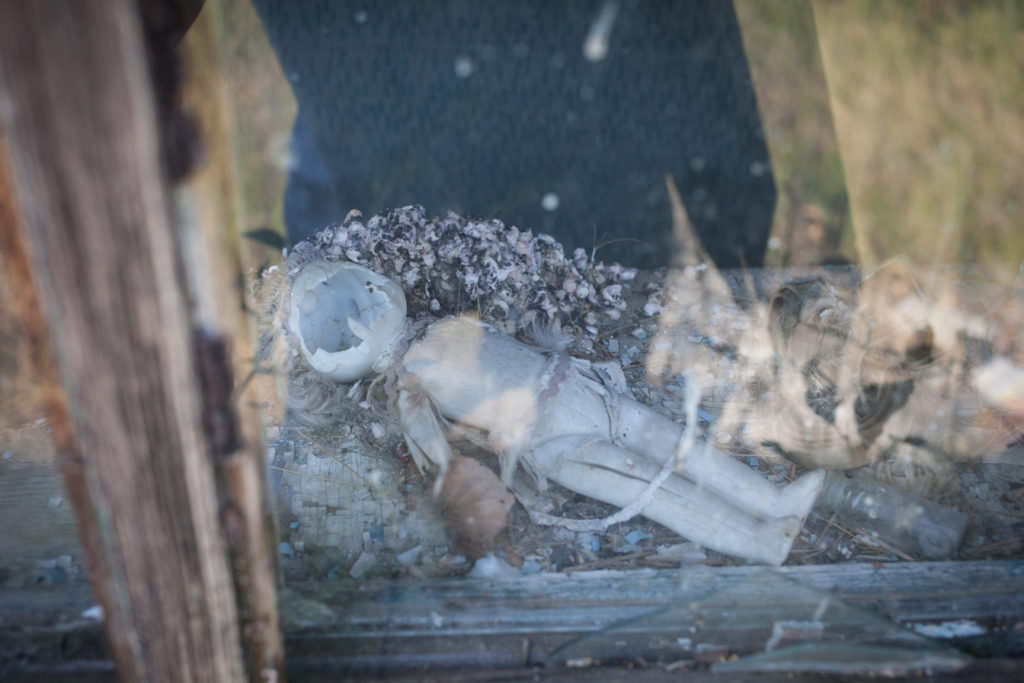
These sites are now included on tourist routes since the Reserve has been opened for visitors. Tourist are transported in 4WDs and short stops are made near the main attraction points – abandoned villages, old buildings, the river bank with half-sunken tugboats and bison feeding grounds. They can also see the incredible amount of wildlife that has flourished in the absence of human development.
Unlike Ukraine, who in 2010 opened Pripyat and Chernobyl towns, as well as its part of the exclusion zone for tourists, Belarus didn’t rush to commercialize its part of the Reserve, but Chernobyl tourism can help earn money, especially after the success of the HBO hit show.
Tourism and agrotourism remain the most attractive option for starting business both for young and old in the affected districts. The folk heritage that has been miraculously preserved within local communities is increasingly popular among young people who see its potential in attracting visitors.
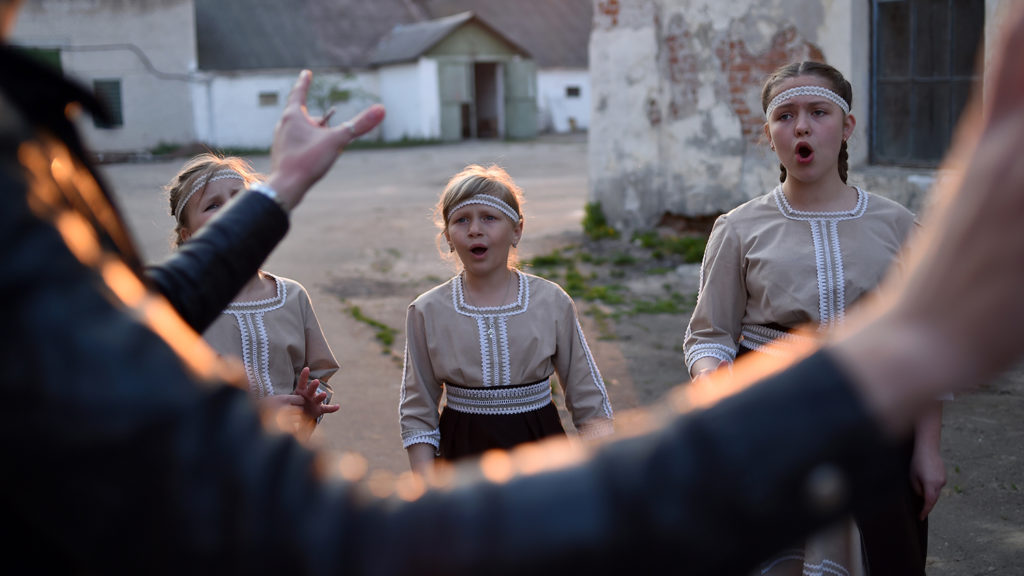
But tourism has to be properly supported, regulated and provide form in terms of infrastructure and services. In November 2018, the country opened part of the Polesie State Radioecological Reserve to managed tourist groups, and is thinking about turning it into an international scientific hub.
In the future, realizing the economic potential of the affected territories will depend upon stronger cooperation with the private sector – which UNDP is attempting to broker through social impact investment.
Since the beginning of the decade there has been a considerable increase in economic activity — 37,000 small- and medium-sized businesses now operate in the areas directly affected by the disaster, up from only 2,375 in 2002.
Hopefully, these opportunities will bring young people back to these districts.
But many locals already see the shift as a signal to the rest of the country that they are still alive and kicking.
UNDP Belarus, with EU support and in close cooperation with local authorities, has been leading a transition from emergency relief and humanitarian assistance to capacity-building and sustainable development. By providing support to more than 200 initiatives, UNDP and partners help local communities get back on their feet and start taking on the challenges of today and tomorrow.
Photos: Siarhiej Leskiec / UNDP Belarus
